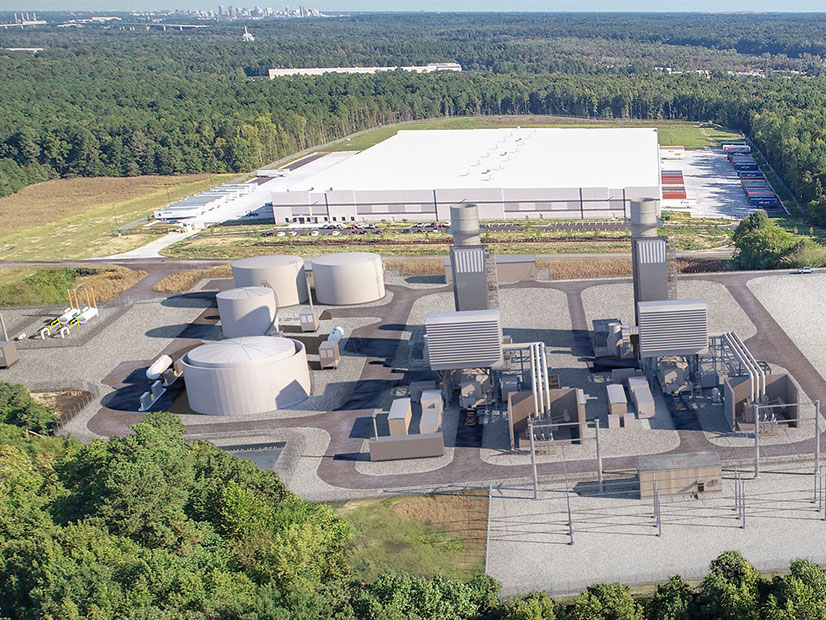PJM ratepayers will likely see capacity prices drop as a result of Dominion Energy’s decision to exit the market, according to a report released by the RTO’s Independent Market Monitor on the eve of the long-awaited Base Residual Auction.
Monitoring Analytics’ report, released Tuesday, a day before the beginning of the BRA for delivery year 2022/23, concluded that Dominion Energy Virginia ratepayers could see either dramatic cost increases or modest reductions as a result of the utility’s decision to leave the RTO’s capacity market and institute a fixed resource requirement (FRR).
Dominion confirmed earlier this month that it chose the FRR option for the 2022/23 delivery period for more than 60 of its generating units, totaling more than 18.1 GW. That number represents about 11% of the 163.6 GW that cleared in PJM’s 2021/22 BRA in May 2018, the last time the auction was run. (See Dominion Opts out of PJM Capacity Auction.)
The IMM report included a variety of scenarios, two of which it said bracket the likely impact of Dominion’s departure by assuming an FRR is established for the Virginia portion of the Dominion load-serving entity, with the rest of Virginia remaining in the PJM capacity market.
If the Dominion/Virginia FRR area procures its entire capacity obligation at a rate equal to the 2021/22 offer cap for the Dominion Zone ($234.13/MW‐day), the IMM said net load charges for the area would increase by $559.7 million (60.1%) compared to the results of the 2021/22 BRA, assuming Virginia load paid capacity market prices prior to implementation of an FRR.
If the Dominion/Virginia FRR area procures its capacity at equal to the clearing price in the 2021/22 BRA ($140/MW‐day), net load charges would drop $39.9 million (4.3%) compared with the 2021/22 results.
In both scenarios, the Rest of RTO clearing price would drop by $13.21/MW‐day (9.4%) compared to the results of the 2021/22 auction, while the Duke Energy Ohio/Kentucky clearing price would decrease by $11.53/MW‐day (8.2%).
‘Unique’ Situation
The Monitor said its analysis used the same methodology as its earlier reports on the potential impact of the FRR option in Illinois, New Jersey, Ohio and Maryland. (See PJM Monitor Defends FRR Analyses in MOPR Debate.)
But Monitor Joe Bowring said the analysis of Dominion’s FRR is “unique” because it is vertically integrated and subject to cost-of-service regulation.
“The actual price for capacity in Virginia would continue to be the result of the regulatory process, and the actual impacts would be determined by the details of the state regulatory process,” the report said.
“Customers in Virginia pay a net cost of capacity that is a result of regulated cost-of-service rates net of the impact of the sale and purchase of capacity in the PJM capacity market,” the report said. “If customers pay the market price of capacity and receive offsetting revenues equal to the market price of capacity, customers are indifferent to the capacity market price and pay the regulated cost of capacity.”
But the Monitor said it “did not evaluate the extent to which customers currently pay more under regulated rates than the market price of capacity [or] the extent to which customers would lose benefits from the loss of revenues from the sale of capacity in the PJM capacity market.”
In an interview with RTO Insider, Bowring said it’s likely that Virginia ratepayers have paid more for capacity than the PJM market price in the past. “We know for a fact that the overall cost-of-service rate for any power plant is typically significantly greater than the capacity market price,” he said. “I think it’s a fair assumption that they are paying more, but we didn’t actually check that. The key point is they’re paying [cost-of-service rates] now … and the only question is the degree of the offset that the state regulators provide.”
BRA Opens
Wednesday marked the opening of the sell offer window for the 2022/23 BRA after delays resulting from FERC’s expansion of the minimum offer price rule. The auction is scheduled to run until May 25, with PJM posting the results on June 2.
PJM was encouraging participants to submit offers as early as possible, pushing for submissions by Friday so that they could more easily be revised by May 25. It encouraged participants to review the capacity exchange user guide to find more information.




